The Dunce Cap Wasn’t Always So Stupid
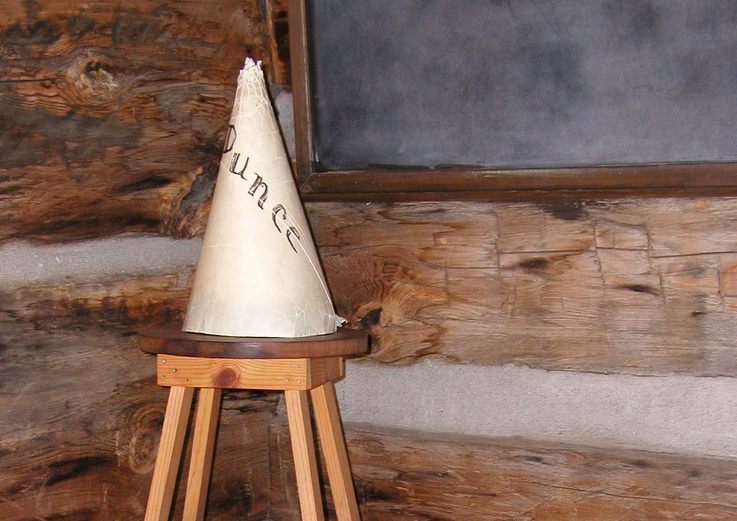
Sure, a dunce cap looks dumb now, but that wasn’t always the case. (Photo: Alan Levine/Flickr)
The dunce cap has long been a visual symbol of idiocy and punishment, but was once seen as something closer to a wizard’s hat. While today we understand the goofy-looking cone hat as denoting some kind of intellectual failing, it actually began as a symbol of respected scholars.
The origin of the dunce cap all begins with one man, John Duns Scotus. His incredible tri-part name, signaling his Scottish heritage (Scotus), and the village where he was born (Duns), is what would eventually lead to the very concept of a “dunce.”
Scotus was a renaissance man centuries before the Renaissance even took place. His exact birthdate is unknown, but he became a Franciscan priest in March of 1291, when he was probably in his twenties. He later went on to become a master philosopher, linguist, theologian, and metaphysical thinker.
Scotus’ life’s work was all about the study of this world and the next. After reading theology and philosophy at Oxford, Scotus went on to teach at the University of Paris. He was later expelled from the country after siding with the pope during a dispute between the Catholic Church and the King of France. He was eventually permitted to return, and continued to teach in France until he was granted the title of Doctor of Theology and made a Franciscan Master, after which he moved to a Franciscan school in Cologne, where he would spend the rest of his days.
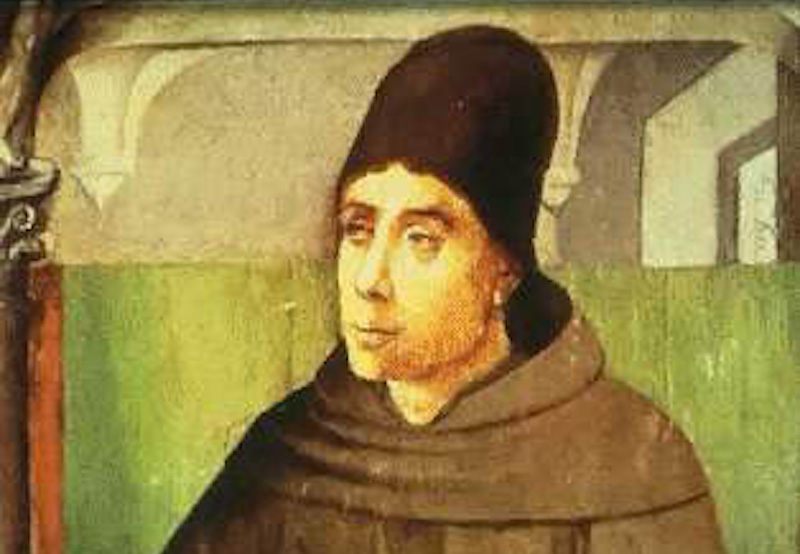
John Duns Scotus (Photo: Wikipedia/Public Domain)
During his studies and teachings, Scotus devised, among other theories, a convoluted philosophical explanation for the existence of a metaphysical God, as opposed to a material “Man in the Sky.” Perhaps more famously, he also envisioned a defense of the immaculate conception of the Virgin Mary herself. Due to the intricacy and complexity of his theories, Scotus was given the terrific papal title, “Doctor Subtilis,” or “The Subtle Doctor.” His teachings came to be known as “Scotism,” while his most devoted students and followers were known as “Dunsmen.”
For some reason, Scotus was also a proponent of the use of pointy hats. It has been said that he was inspired by the use of such hats by wizards, and also conversely that it was Scotus’ love of the headgear that inspired the popular image of wizards wearing conical caps. Whichever version is true, they were both meant to denote wise men.
In fact, Scotus believed the pointed shape of the hat would, in some metaphysical way, act as a reverse funnel for knowledge, with wisdom flowing into the pointed tip, and spreading into the brain below. These hats became popular among the Dunsmen, and were soon viewed as not just as a symbol of Scotism, but as a signifier of high intelligence.
But pointed caps were only a badge of honor until the 1500s rolled around. Scotus’ teachings had continued to be viewed favorably by ecclesiastical academics and the church in the centuries after his death in 1308, but by the mid-16th century the popular thought among church scholars began to turn against the Dunsmen.
The Subtle Doctor’s intensely analytical writings and labyrinthine logic came to be seen as overly complex, and increasingly in conflict with the more humanistic views emerging with Renaissance thought. The remaining Dunsmen, who continued to devote themselves to Scotist thought, began to be thought of as hopelessly behind the times, or just plain stupid. Thus the Dunsmen, or Duns (can you see it coming?), came to be associated with idiocy, and their pointy hats became symbols of this ignominious new reputation.
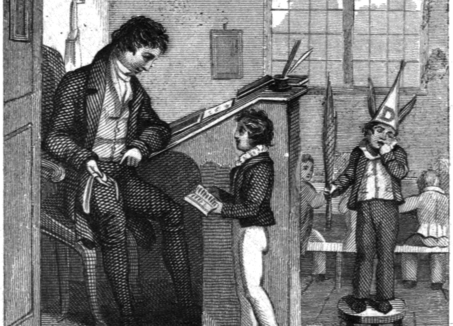
Photo: Wikipedia/Public Domain
The term “dunce” as we understand it today appeared as early as 1624, when a “dunce-table” was mentioned in the John Ford play, The Sun’s Darling, in reference to a place where children or dullards were seated apart from others. One of the earliest mentions of the dunce cap itself came more than 200 years later, when it appeared in Charles Dickens’ 1840 novel, The Old Curiosity Shop. It is noted as just one of the many things found on an elementary school classroom wall, and described as being set on a shelf all its own, made from “old newspapers and decorated with glaring wafers of the largest size.” The casual way the dunce cap is mentioned speaks to the fact that its appearance and use was already common.
The heyday of the dunce cap (or the low point of disruptive children) seems to have been the Victorian era, when use of the dunce cap as a disciplinary symbol took off in Europe and America. The classic image is of a sullen child in a basic cone hat adorned with the word “dunce” or simply a large letter “D,” who is sent to a stool in a corner of the classroom. It was as much a punishment as a warning to other children thinking of potentially acting out.
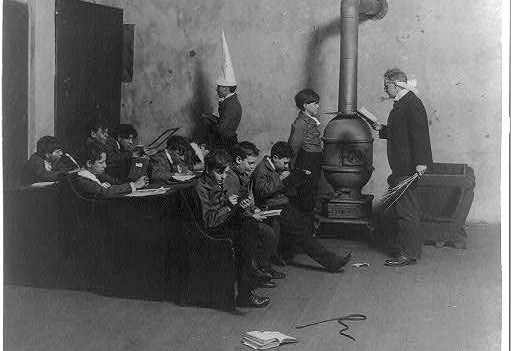
A boy’s school in 1905. (Photo: Library of Congress)
This practice of conspicuous punishment continued on for a surprisingly long portion of the 20th century, in schools on both sides of the Atlantic. Class clowns, slow learners, or any other child causing a ruckus or not paying attention would be made to sit or stand on the stool wearing the former Dunsmen’s cap. It was used as late as the 1950s in American schools. As modern conceptions of classroom etiquette and punishments that didn’t humiliate and traumatize students evolved, use of the dunce cap was phased out and banned in most Western schools.
While the use of the pointed cap may have eventually fallen out of favor, the practice of putting kids in a “dunce’s corner” continued well into the 2000s in some parts of England. In a 2010 Telegraph article, it was reported that putting kids in the dunce’s corner had at last been forbidden in a number of areas.
The dunce cap may have gone out of style as a popular form of punishment, but as an icon it lives on. These days, calling someone a dunce continues to be an effective, if slightly archaic, insult. But there may be hope for the hat yet.
Today John Dun Scotus is thought be one of the great thinkers of the Middle Ages. He was even beatified in 1993 by Pope John Paul II, in recognition for his contributions to religious theory. Perhaps there is still room for the cap to be viewed as the symbol of learning it once was.

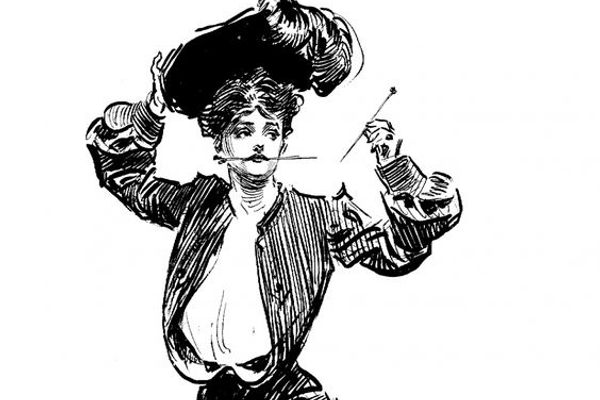

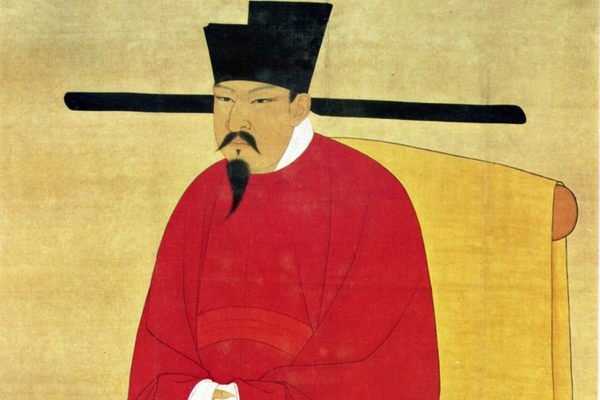



Follow us on Twitter to get the latest on the world's hidden wonders.
Like us on Facebook to get the latest on the world's hidden wonders.
Follow us on Twitter Like us on Facebook